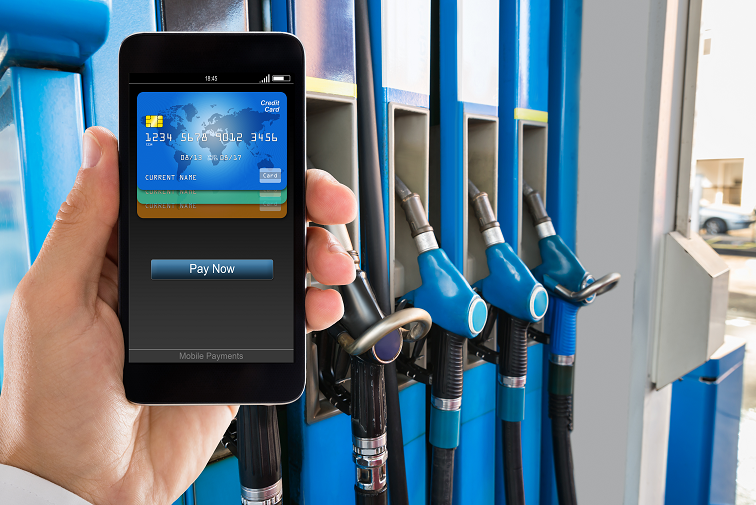Instant Payments at the Point of Sale - Looking at opportunities for the Forecourt Retailer - October 2019

Eliminating card fees, improving cash flow and receiving money in real time: the benefits of retail instant payments are significant. Alain Martin, Board member from Smart Payment Association looks at the evolving market and the opportunities for forecourt retailers.
Instant Payment is not a new concept. Back in 2013 the European Central Bank established the Euro Retail Payments Board (ERPB) with the express purpose of increasing the speed at which payments are made and received in the SEPA area. Four years on, in November 2017, the pioneering SEPA Instant Credit Transfers scheme went live. This made it possible for consumers and businesses alike to initiate Euro credit transfers in under ten seconds.
It’s easy to see the attraction. Who doesn’t want to get their money quicker? Instant Payments massively reduce the time it takes to transfer money from payer to payee – typically from one business day to mere seconds.
More recently, the TARGET Instant Payment Settlement (TIPS) service added the ability for participating Payment Service Providers (PSP) to offer transfers to their customers in real time 24x7. This meant individuals and firms could, for the first time, transfer money to each other in seconds, irrespective of the opening hours of their local bank.
It’s not just happening in Europe. From Australia to Mexico, some 45 countries have ‘live’ instant payment schemes, with 13 more in the planning stages. It’s all contributing to a real-time payments market expected to reach approximately $26 billion by 2023.
But for retailers, the benefits of instant payments go well beyond speed.
The forecourt opportunity
Today, the prospect of offering instant payments at the point of sale is garnering a lot of attention. It’s a simple enough vision. Merchants associate their physical loyalty cards (and mobile apps) with the personal IBAN banking details of consumers. Shoppers then tap in their pin code – just as they would if using a debit or credit card. The transaction is authenticated, and money is transferred to appear in the retailer’s account in real time.
Not only does getting the money quickly have a marked impact on cash flow, the finality of an instant payment means less risk. Merchants know the money is in their account at the point of purchase and there’s little or no chance of the transaction being stopped and money ‘pulled back’ by the customer.
Another considerable benefit for the merchant is the elimination of debit and credit card fees. There’s the credit card transaction fee – typically in the region of one to three percent of the transaction, and a smaller monthly merchant service charge. If consumers can be encouraged to adopt instant payments, these business costs disappear.
Instant payments also have a higher spending limit: currently 15,000 € with a plan to move up to 100,000€ as of 1 July 2020. Adoption of instant payments will therefore facilitate the elimination of checks and remove the spending limits imposed by card schemes.
There’s also the powerful issue of brand that retailers are understandably keen to explore. For reasons of data capture and customer profiling, many retailers issue loyalty cards. Typically, these are not payment cards but need to be scanned together with the payment card at the point of sale. This creates something of a ‘brand disconnect’, with the ultimate interaction being with the payment scheme brand rather than the retailers’. By contrast, instant payments supported by the loyalty card ensure direct and frictionless relationships between brand and consumer.
Finally, the approach of using a card to initiate an instant payment can easily be extended to the digital world by digitizing the card into a mobile wallet for use at the point of sale or for remote payments.
Despite the many benefits for retailers, there are challenges. Most notably, ensuring the payee is who they say they are, and that they have the funds in the bank to cover the purchase. Similarly, there’s an entirely logical concern that new payment methods will require new capital investments.
The good news is that it’s entirely possible to address many of these issues with existing point of sale infrastructure. There’s no reason why today’s authentication debit/credit processes cannot be tuned for instant payments, or that existing instore POS systems cannot be used to do it.
Of course, as with any new approach, there are challenges. While the European Banking Association (EBA) believes authentication responsibilities lie with banks, the approach of an instant payment card issued by the retailer would imply, to preserve a fluid customer experience, that the retailer authenticates the user. This would require retailers to have agreements with multiple financial institutions. While such as approach works for pilot projects, it won’t easily scale for real-world deployments and a national or European framework agreement, that retailers and banks would sign, would be desired.
SPA Retail Payments Workgroup is exploring this and other potential barriers to help drive standardized approaches that deliver truly practical solutions. It is in discussion with retailers, schemes and banks, and work is ongoing.
Ultimately, the growth of instant payment is not about trying to disrupt the market, but rather to address the issues that have dogged retail payments for decades – all the while offering new options that are both convenient and familiar to consumers. It’s certainly possible, and with retailers showing great enthusiasm, it will happen. There’s just a little work still to do.
François Lecomte-Vagniez, SPA Retail Workgroup Advisory Facilitator is presenting this opportunity at Forecourtech on 15 October 2019, held in Alicante in Spain. Focused on the evolving retail forecourt, this technology-driven convention is focused on the evolution of the smart forecourt and the digital technologies that will optimize forecourt operations and enhance the customer experience in the next 3-5 years.


